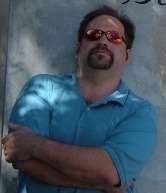New Electric Vehicle Battery/Fuel Cell/Electrolyzer System by Apollo- AES
Uploaded by frankknee on Feb 7, 2012
Apollo Energy Systems, Inc. (AES), 120 shareholders
- 1966 MARS I Electric Car had a cruising range of 120 miles, something unheard of for electric cars of that time.
NEW BATTERY FOR ELECTRIC CARS -U.S. PATENT 7,037,620 B2, May 2, 2006 MULTI-CELLULAR BATTERY WITH LEAD FOAM
-designed to replace Nickel-Metal Hydride and Lithium-Ion Batteries.
The Tri-Polar Lead Cobalt Battery II improved over its predecessor with a Lead Foam Substrate to replace hard lead grids, a Recirculating Electrolyte System, a Gas Purging System, an Automatic Watering System, an improved Tri-Polar Intracell and Intercell Connection System, and a Tongue and Groove Intercell Connection System. One hundred (100) claims were allowed on the patent for this sealed battery.
FIRST GENERATION BATTERY
-was first produced in 1953 when it was made under the ATLAS brand for Esso Standard Oil. General Motors tested the battery in 1967, concluded range of 146 miles. For the 1968 Great Transcontinental Electric Car Race and 1970 Clean Air Car Race, the winning vehicles were powered by Tri-Polar Lead Cobalt Batteries I, fast charging in 30 to 45-minutes.
SECOND GENERATION BATTERY
The new battery will have an energy density 2.946 times greater than the original battery and could easily replace Nickel-Metal Hydride and Lithium-Ion Batteries used by some of the auto-makers. The MARS II, tested by General Motors, would now have a maximum range of 430 miles (146 miles x 2.846 = 430 miles).
Lead Foam Substrate.
The hard lead grids used in both positive and negative plates are now replaced with Lead Foam. This substantially increases the surface area of the hard lead grid and allows the active material of the
plate (which chemically stores electricity) to reside in deep pores of the substrate and to produce electric current through thousands of lead conductors. The contact between the active material and the lead conductors is over a thousand times greater than in the hard lead grid.
The advantage of the Tri-Polar construction is that millions of current paths are opened up in and between the plates within the cell, and between adjacent cells, from cell to cell, resulting in maximum utilization of the active material in the cells, less voltage drop under high discharge and a flatter discharge curve under continuous high discharge. The cells are able to deliver more power and to accept high recharge currents. The Tri-Polar Lead Cobalt Battery I could be recharged to 80% of capacity in 22-minutes.
Battery Capacity and Cost
The battery capacity of the Tri-Polar Lead Cobalt Battery I is 37.2669 watt-hours per kilogram (WH/kg) (h). The theoretical capacity of a lead-acid battery is 170 WH/kg. It is reported that the capacity of Nickel-Metal Hydride Batteries is 90 WH/kg and the capacity of Lithium-Ion batteries is 110 WH/kg. Engineering calculations show that the Tri-Polar Lead Cobalt Battery II will have a capacity of 109.80 WH/kg, 2.945 times greater than the first generation battery. This means that the driving range of a car with the Tri-Polar Lead Cobalt Battery II should be greater than a car with a Nickel-Metal Hydride Battery and approximately the same as a car with a Lithium-Ion Battery. However, the cost of the Tri-Polar Lead Cobalt Battery II is $75 per kilowatt-hour (kWh) vs. $360-$450/kWh for a Lithium-Ion Battery. A Lithium-Ion Battery weighing 450-pounds might cost $25,000, while a Tri-Polar Lead Cobalt Battery II of the same weight would cost $5,200 and take an electric car the same number of miles on a charge.
Life
Over 100 full performance, highway electric vehicles were built, The average time for replacement battery orders was 42-months. Studies have shown that the new battery will have a cycle life of 1,500. This should equate to 600,000 miles (1,500 cycles x 400-miles per cycle). Charging the second generation battery at home takes 7-hours to replace 700 amp hours in an 80% discharged battery in a large car (240 volts a.c. @100 amps). In a small Electric Car recharge time is much less.
FUTURE
The Fuel Cell in a car will keep battery charged at all times. Hydrogen and oxygen continuously supplied to the Fuel Cell. Hydrogen could safely come from liquid ammonia stored in a low pressure tank under the car. Ammonia would be fed to an Ammonia Cracker which would produce pure hydrogen and nitrogen. Ammonia Fuel Stations could be established. Ammonia is the second largest chemical produced in the world.
* * * *
Above video was produced by Francis C. P. Knize
Blog owner's email: stevengerickson AT yahoo.com
More videos embedded in this blog that were produced by Francis C. P. Knize, documentary producer:
http://thesrv.blogspot.com/2012/02/oskar-kokoschka-face-for-our-time-part.html
http://thesrv.blogspot.com/2012/02/friends-of-mine-nasa-exploration-and.html
[click here] for:
Divorced Wilton (Connecticut) father struggling to change system

Francis Knize/photo matthew vinci
[more]
-


0 Comments:
Post a Comment
<< Home